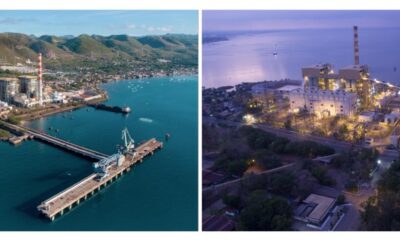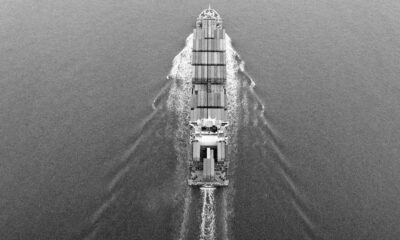News
PH Seeks More Climate Action for Coral Triangle
The Philippines sees the need for more international climate action that will better protect the 6 million-square kilometer Coral Triangle, the marine area experts cited as center of marine biodiversity on Earth.
Philippine Environment chief Roy Cimatu raised the urgency for elevating such need before the international community, noting climate change is already adversely affecting the Coral Triangle.
“Climate change is upon us,” he said Friday (Dec. 14) in Makati City at the 7th Coral Triangle Initiative on Coral Reefs, Fisheries and Food Security (CTI-CFF) ministerial meeting which looked into measures for better protecting the area.
The Coral Triangle refers to a roughly triangular area in the tropical marine waters of the Philippines, Indonesia, Malaysia, Papua New Guinea, Solomon Islands and Timor-Leste.
“Unprecedented rates” of drought, excessive rainfall and weather, coral bleaching and ocean acidification are among climate change impacts Coral Triangle already experienced in the past 10 years, he said.
Cimatu said such impacts hampered lives of people in Coral Triangle, particularly those living in this area’s coastal communities. Climate change also “devastatingly affected” economies of countries, he added.
“In future international conferences, our experiences must be heard, and stories told loud and clear,” Cimatu said.
Being able to relay such information is essential in further mobilizing international climate action that will benefit Coral Triangle, he said.
“We’re part of the bigger solution,” he told CTI-CFF members Indonesia, Malaysia, Papua New Guinea, Timor Leste, Solomon Islands and the Philippines which are the six countries in Coral Triangle (CT6).
UN Framework Convention on Climate Change and Convention on Biological Diversity are among possible global platforms for airing CTI-CFF’s concerns on climate change and Coral Triangle, Cimatu said.
“As a regional cooperation and partnership initiative, CT6 must aim to be heard in these global platforms and should put forward our agenda to serve as reference point in crafting international frameworks in environmental conservation,” he said.
Among actions that will benefit Coral Triangle are lessening emission of climate change-driving greenhouse gases and reducing environmental footprint of fishing and other high-impact activities.
Lying along the equator at the confluence of Western Pacific and Indian oceans, CTI-CFF said Coral Triangle hosts more than 600 different species of reef-building corals.
CTI-CFF is CT6’s multilateral partnership formed in 2009 to protect marine and coastal resources of Coral Triangle by addressing food security concerns, climate change, marine biodiversity threats and other issues hounding this area.
“CT6 shall be the catalyst so that one day, nations will come to an understanding on how important prioritizing the environment is above anything else,” said Cimatu.
According to World Wildlife Fund (WWF), Coral Triangle hosts about 76 percent of Earth’s coral species, six of the world’s seven marine turtle species and at least 2,228 reef fish species.
“Resources from the area directly sustain more than 120 million people living here,” it also said.
Over-fishing, destructive fishing, unsustainable tourism, impacts of urbanization and climate change are fast eroding Coral Triangle’s resource base, however, WWF warned.
CTI-CFF also described Coral Triangle’s coral reefs as among the world’s most threatened with about 95 percent of these ecosystems at risk from over-fishing, destructive fishing, land-based pollution and coastal development.
“A lot must be done – we want nothing less for our future generations,” Cimatu said.
He urged CTI-CFF member-countries to sustain collaboration with each other and partners on protecting Coral Triangle particularly amidst climate change and its impacts.
“We must face its impacts head-on, not with desperation but with a sense of hope and purpose,” he added. (PNA)
































